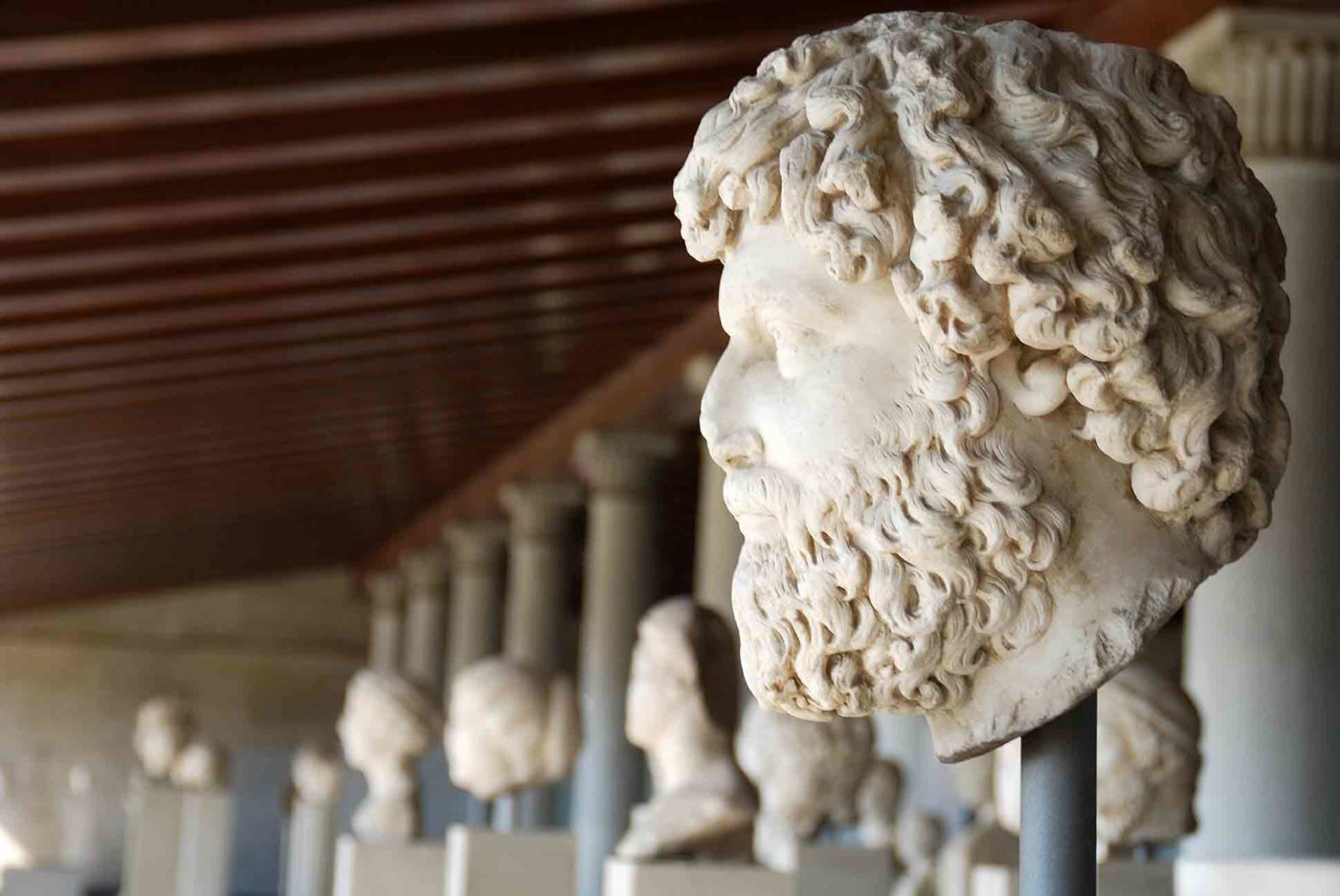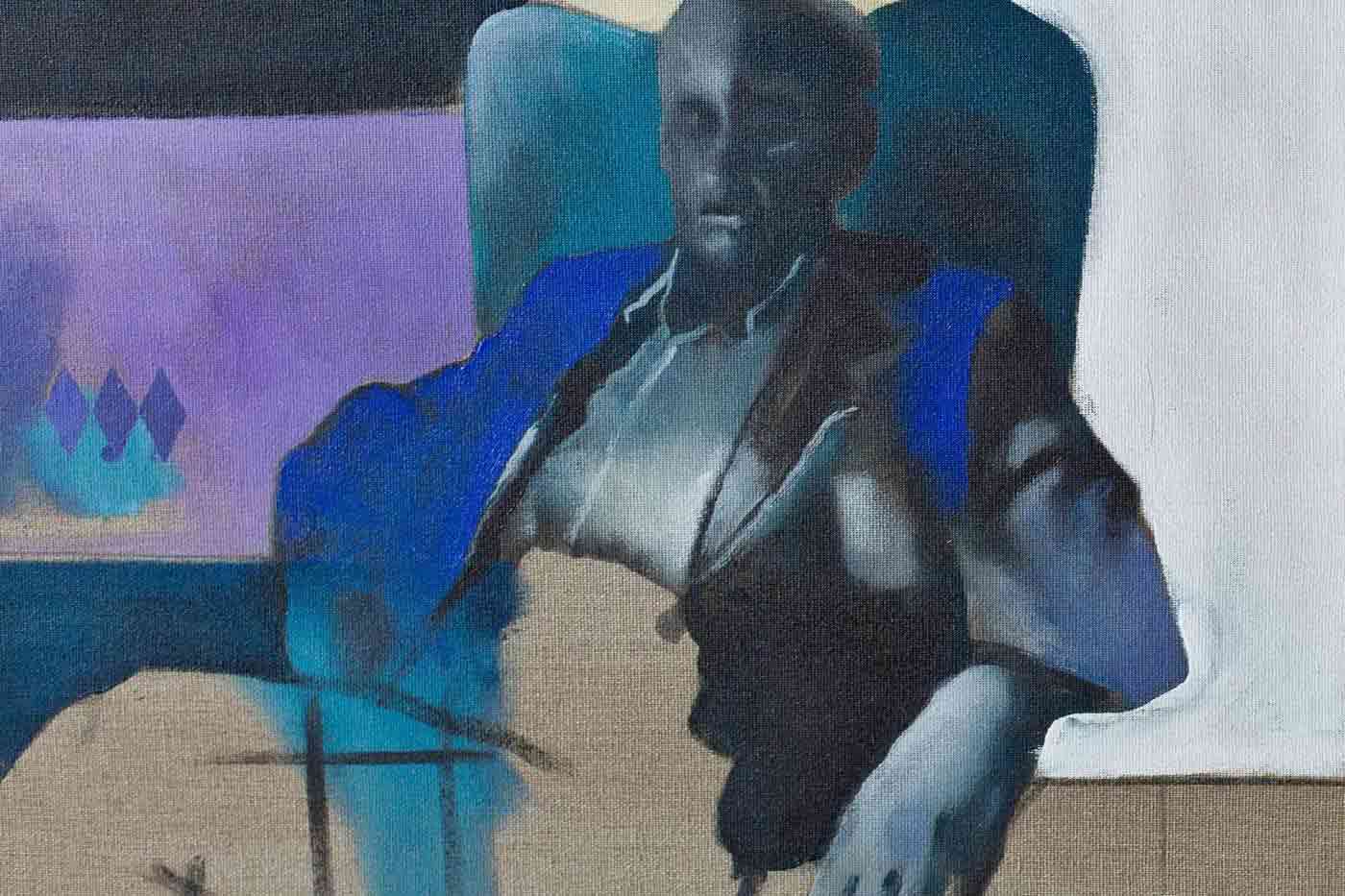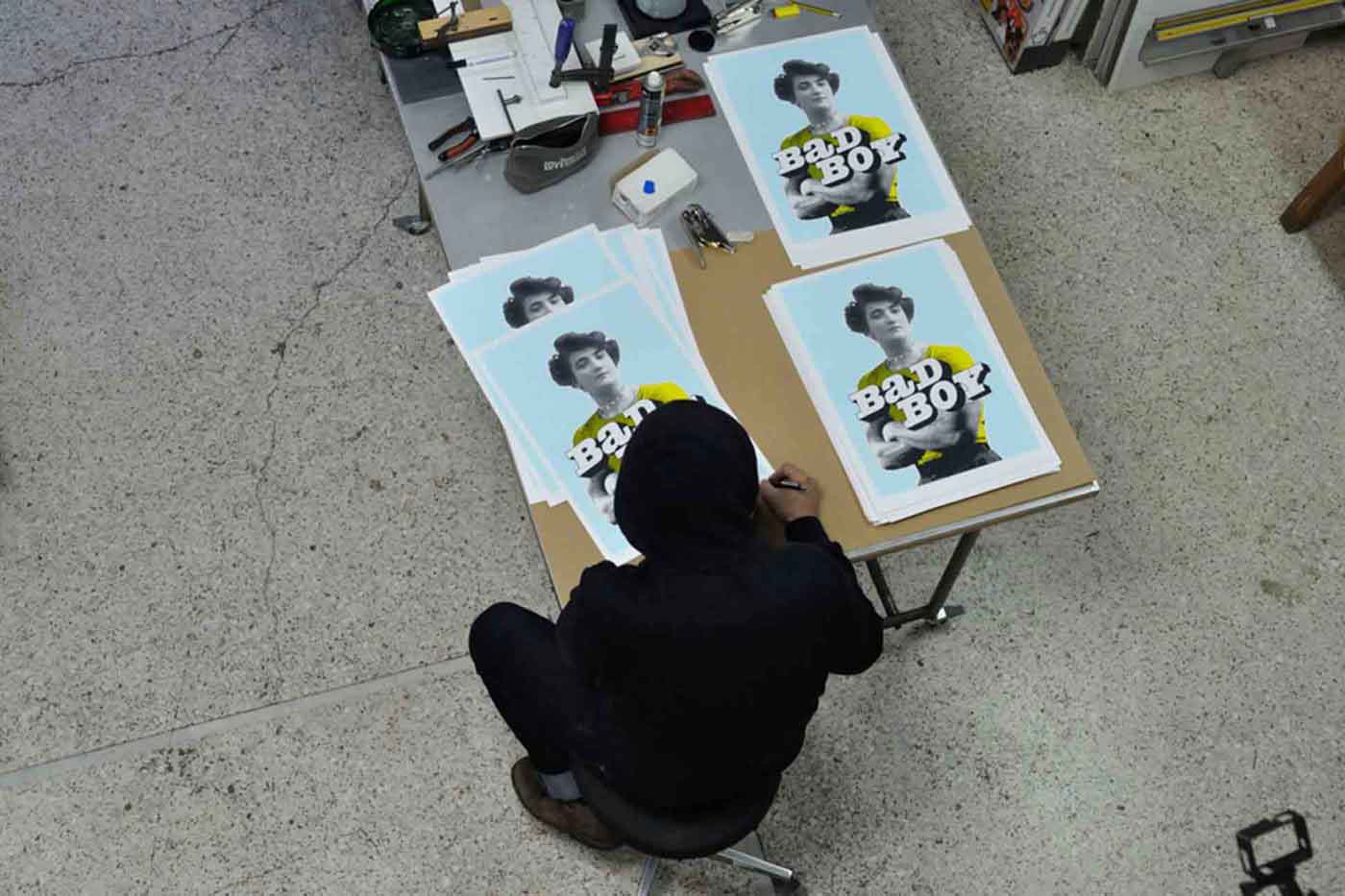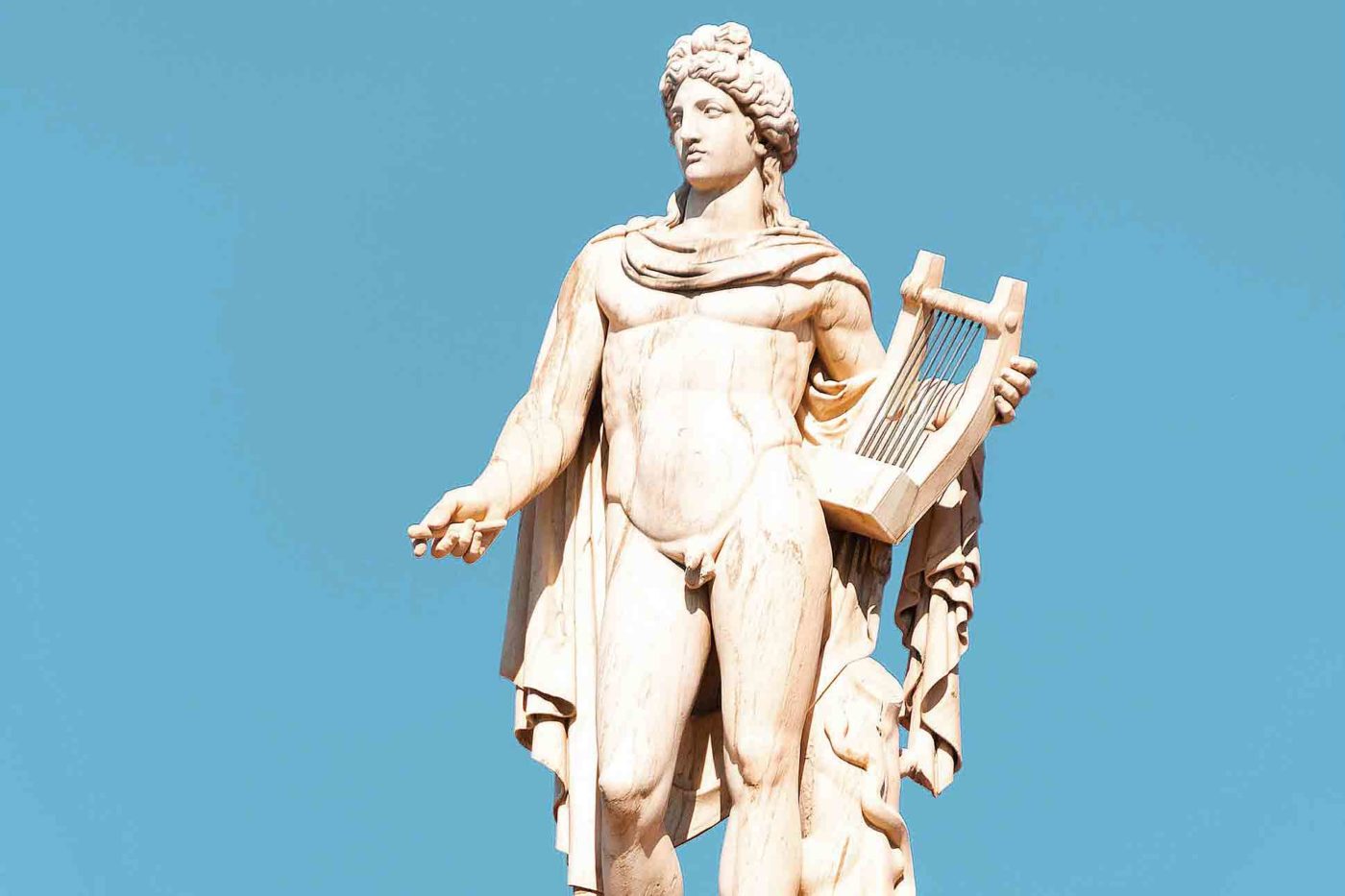Much of Western civilisation was born in Greece. On a visit to the eastern Mediterranean country, Zack Cahill gets down and arty in its capital, Athens.
Athens, more than any city I’ve visited, is a patchwork of the old and the new. Walk up to any perfectly modern side street and you’ll happen upon a chunk of the Ottoman Empire – a jagged section of wall, an ornate wooden door, poking out as if it had just fallen through a wormhole. A spotless neoclassical building looms over a twelfth-century church and sidles up against some brutalist seventies shitbox. And everywhere, on every surface to just above head height, is graffiti. Not your trendy ‘street art’, but spiky tags and spider-crawl slogans. No translation is necessary; it’s a tidal line, demarcating pissed-off youth scuffing up against their ancient city.
Any city where history and culture abound runs the risk of becoming a time capsule, calcifying it into a kind of historical theme park. Or it can go the other way and simply obliterate its past. Athens strikes a balance between preservation and progress, old and new together approaching harmony. Today, my focus was on the new. In Kolonaki Square, my guide gives me a compressed history of Greek modern art. Whilst being schooled, we stand between two statues that exemplify this Athenian balance of old and new. On one side, a modernist sculpture of Nike, the winged goddess of victory, rendered as a charred hunk of flesh, a triple amputee with one scorched wing. On the other side is a 13th-century pillar that superstitious Athenians used to hang their clothes on to ward off illness. Transported to this modern square, it makes me think of a time-travelling Marcel Duchamp, displacing everyday objects to give them new relevance. From here we walk to the Ghikas gallery, passing upmarket boutiques and Orthodox priests in designer gear (no joke, these guys are blinged-out to near hip-hop levels: Hermès bags and Burberry umbrellas abound. Whatever the country’s troubles, the business of religion is in rude health). The gallery highlights the creative output of Greece in the Thirties. Paintings, sculptures, poems and even set designs from theatrical productions capture the anxieties and preoccupations of the time. The paintings of Kontoglou evoke Byzantine religious iconography, with all its golden-haloed saints, pre-Renaissance anatomical weirdness and flat perspective. This style became very influential and my inner psychoanalyst pictures scores of depressed Greeks, tearfully putting gold paint to canvas, yearning for a time when their Empire straddled the world.
And while we’re being Freudian, there’s Yannis Tsarouchis, whose gorgeous, colourful canvasses depict vulnerable young men alongside hulking, powerful women and pretty much scream ‘mummy issues’.
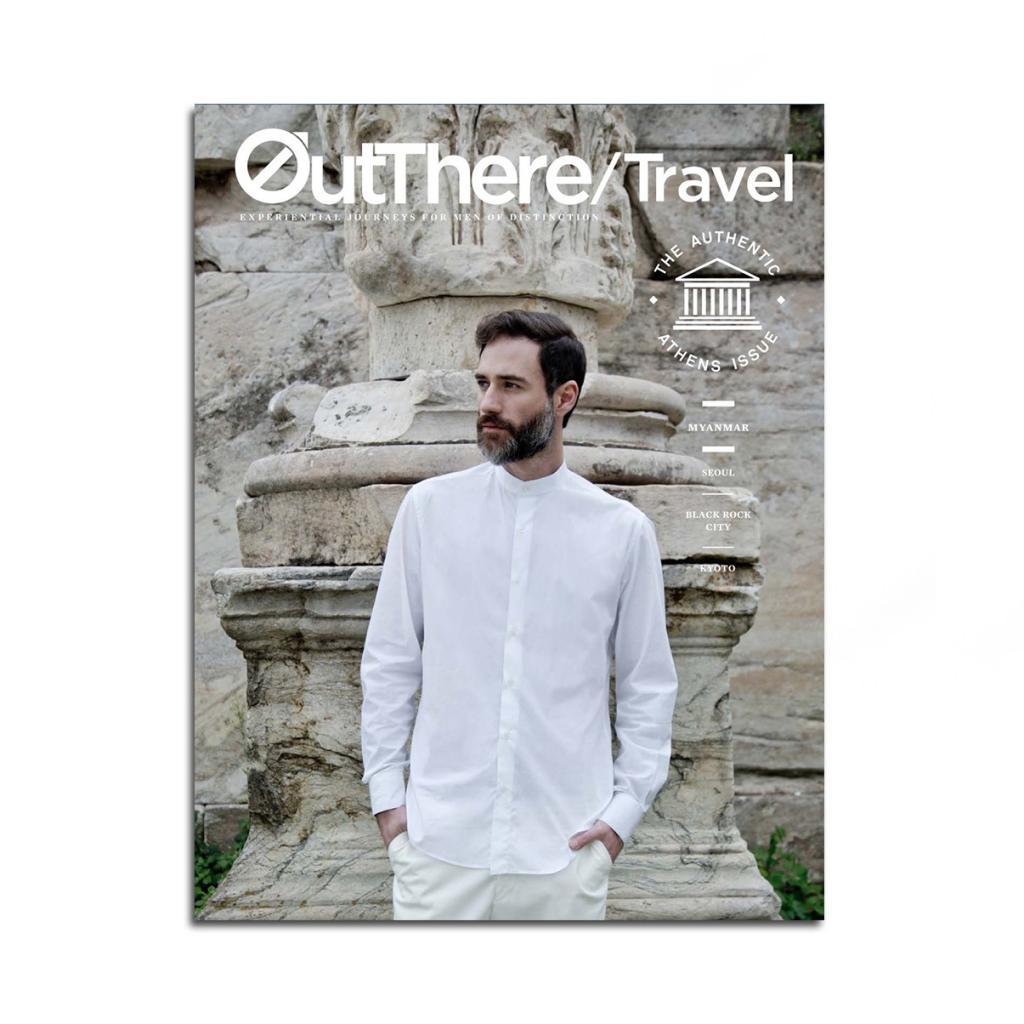
This story first appeared in The Authentic Athens Issue, available in print and digital.
Subscribe today or purchase a back copy via our online shop.
Nikos Hadjikyriakos-Ghikas himself, whose studio is preserved on the museum’s top floor, was quite the bon viveur. He owned the building that now houses the museum and drew enough rent to devote himself to his art. For me, his work is too indebted to Picasso to be interesting in its own right, but standing in his apartment with its airy studio and the elegant drawing room is a romantic window into the era and its goings-on.
Let’s talk about Greek art history for a second to put this all in context. A massive military defeat in Asia Minor in 1922 knocked the Greek economy and the nation’s self-worth (sound familiar?). Meanwhile, in Paris, the coolest kids like Dali, Eliot and Picasso were hanging out and swilling absinthe, casually redefining art for the 20th Century. Out of the ashes of their existential crisis, Greek artists sought to affirm their nationality, looking into their pasts and filtering it through these new techniques. These artists became known as ‘The Generation of The Thirties’. In my mind, it’s happening all over again.
Our last stop brings us to a working studio. The artist, ironically named Paris, welcomes us to a top floor room with high ceilings and wraparound windows that feels light and brimming with artistic potential. Paris uses a mix of screen-printing and collage in his work. One piece depicts an aristocratic woman’s head atop the body of Marlon Brando circa ‘Wild One’, arms crossed, the phrase ‘Bad Boy’ emblazoned across his chest. A series of prints render phrases such as ‘God isn’t here, please scream for help after the beep,’ in a cartoonish style. Paris shares this space with two other artists; the room is suffused with absurdist humour. A set of twisted fairy tale illustrations – the Wolf and Red Riding Hood, Beauty and the Beast – hang from a washing line. A canvas shows a stark, snowy landscape with the phrase ‘Summertime and living is easy,’ floating in the sky like wispy clouds. It’s a bit like walking around inside Terry Gilliam’s head.
Athens is still too mired in austerity for talk of ‘green shoots’ and optimism. Swingeing cuts to the arts have left many adrift and the crisis is still the first topic on everyone’s lips. But there is always light. Austere times mean that studio spaces like this come cheap. They also provide ample subject matter for artists. That angry, spidery graffiti that covers the city is the raw matter, but craftsmen like Paris will continue to transmute it into something beautiful. Whatever happens down the centuries, it’s likely that Athens will stay beautiful too.
This ‘Modern Muses’ tour was courtesy of Discover Greek Culture, who provide hands-on cultural tourism experiences in the city, showcasing history, art and gastronomy. They can also arrange entry into limited-access areas.
Photography by Martin Perry, Gonbiana (via Pixabay) and Hert Niks (via Unsplash)
Get out there
Do…
… make time to explore 20th and 21st century Athens. The stories of contemporary Athens are just as interesting as the ancient ones.
… take the opportunity to go on a Discover Greek Culture tour, you’ll find they approach things a little differently.
… invest, if you feel inclined, in art from the workshops and studios you visit. They make great souvenirs – we hooked ourselves a ‘Bad Boy’.
Don’t…
… try to fit a tour into an already packed schedule. The best way to experience Athens with a guide is to invest time in getting to know the city and your particular subject of interest.
… be afraid to ask questions. The best guides are like walking encyclopedias and will answer all your queries.
… miss the free art, the graffiti that covers every inch of what was once blank wall.


